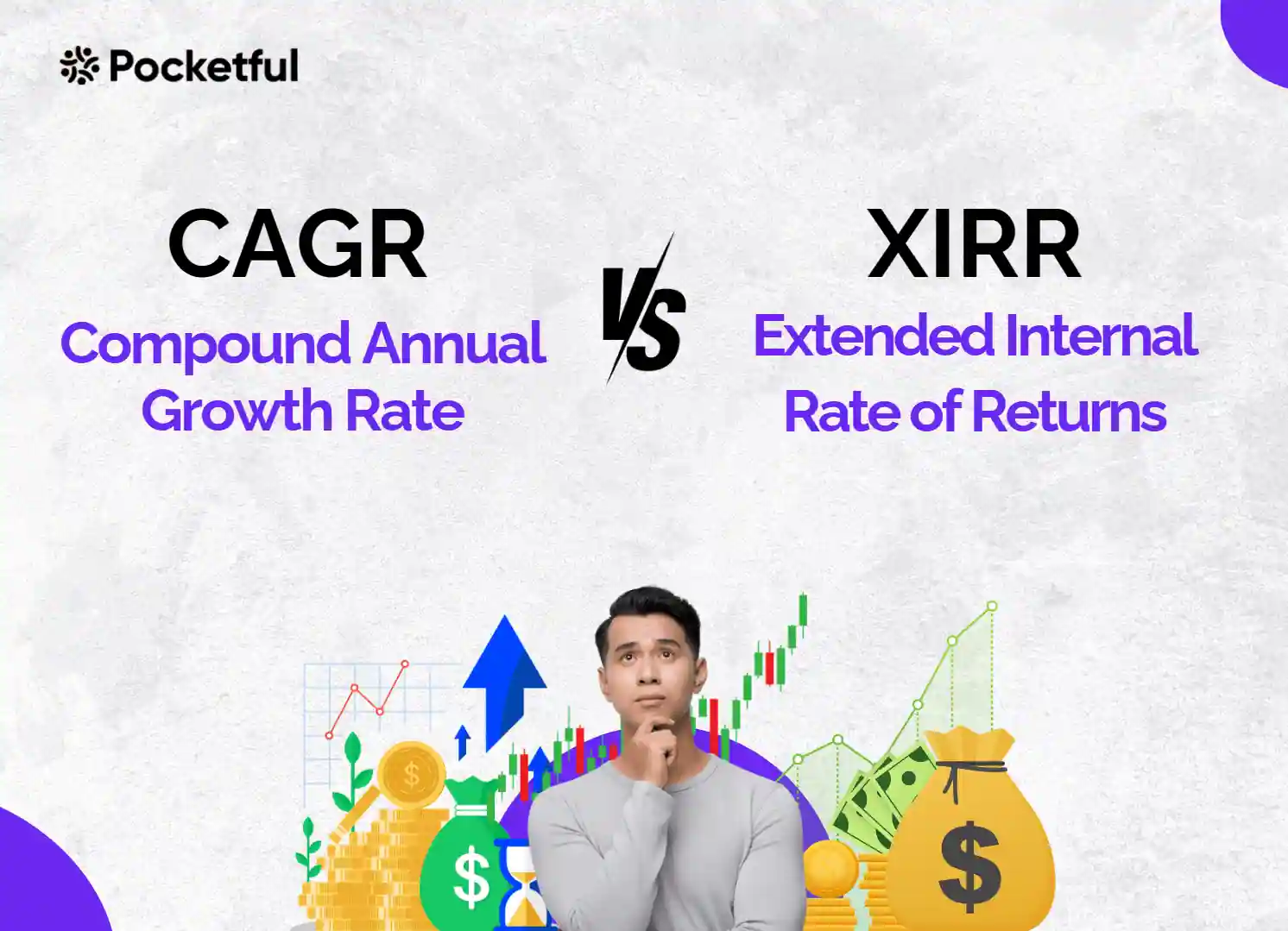| Type | Description | Contributor | Date |
|---|---|---|---|
| Post created | Pocketful Team | Jun-05-24 |
Read Next
- What is the 15*15*15 Rule of Mutual Fund Investing?
- Mutual Fund Factsheet: Definition And Importance
- Arbitrage Mutual Funds – What are Arbitrage Funds India | Basics, Taxation & Benefits
- Hybrid Mutual Funds – Definition, Types and Taxation
- Top AMCs in India
- Active or Passive Mutual Funds: Which Is Better?
- Liquid Funds Vs Ultra Short Fund: Which One Should You Choose?
- Debt Mutual Funds: Meaning, Types and Features
- Equity Mutual Funds: Meaning, Types & Features
- What are Small Cap Mutual Funds? Definition, Advantages, and Risks Explained
- What is PSU Index? Performance, Comparison, Benefits, and Risks Explained
- Bandhan Long Duration Fund NFO: Objective, Benefits, Risks, and Suitability Explained
- Smart Beta Funds: Characteristics, Factors, Benefits, and Limitations
- The Rise of ESG Funds: Overview, Growth, Pros, Cons, and Suitability
- Mutual Funds vs Direct Investing: Differences, Pros, Cons, and Suitability
- A Comprehensive Guide on Mutual Fund Analysis: Quantitative and Qualitative Factors Explained
- NFO Alert: PGIM India Large & Mid Cap Fund
- ELSS Funds: 3 Years Lock-In Worth It?
- Regular vs Direct Mutual Funds: Make The Right Investment Decision
- Decoding Credit Risk Funds In India
- Blog
- xirr vs cagr
XIRR Vs CAGR: Investment Return Metrics

We all know that we should choose securities that generate the highest return. But have you wondered which return should we consider while evaluating securities?
This blog will delve deeper into two of the most popular methods to evaluate returns.
What is CAGR?
CAGR stands for the Compounded Annual Growth Rate. It measures an investment’s annual growth rate over time and is often used to measure and compare investments’ past performance or to project their expected future returns. It calculates the constant average growth rate over a period of time for a long-term investment.
The compound annual growth rate isn’t a true rate of return. It describes the growth rate at which an investment has grown, assuming that the growth rate is the same every year and that the profits are reinvested at the end of each year. In reality, this kind of performance is unlikely because the growth rate depends upon multiple outside market factors. However, the CAGR can be used to smooth returns so that they may be more easily understood compared to alternative methods.
Mathematical formula
CAGR = (EV / BV)^(1 / N) – 1
where: EV = Ending value, BV = Beginning value, and N = Number of years
Calculation
- Divide the value of an investment at the end of the period by its value at the beginning of that period.
- Raise the result to an exponent of one divided by the number of years.
- Subtract one from the subsequent result.
- Multiply by 100 to convert the answer into a percentage.
CAGR Limitations
- It smooths the growth rate, so it does not give a true picture as it ignores volatility and implies that the growth during that time was steady.
- It doesn’t account for the inflow and outflow of the funds from the portfolio over the period of time.
- It ignores volatility and is hence not useful in forecasting growth rates during unstable times.
- It is not relevant for early growth ventures as they are naturally volatile.
Can CAGR be improved?
The major limitation of CAGR is that it calculates a smoothed rate of return over time, ignoring volatility. To improve these limitations, investors can use a risk-adjusted CAGR. A simple method for calculating a risk-adjusted CAGR is to multiply the CAGR by one minus the investment’s standard deviation [standard deviation measures total risk, which is the sum of systematic (market-specific) and unsystematic risk (investment-specific)].
If the standard deviation is zero, the risk-adjusted CAGR is unaffected. If the standard deviation is larger, the risk-adjusted CAGR will be lower.

What is XIRR?
XIRR, or Extended Internal Rate of Return, is a method to calculate the annualized return on investment with irregular Cash flows. It considers all cash inflows and outflows, along with the dates on which they occur, to calculate the annual rate of return. XIRR considers the timing and amount of each cash flow, making it a more accurate method for investments with irregular cash flows. It is more flexible than CAGR as different time horizons and different cash flows can be easily accounted for here.
XIRR calculation is tricky, but any financial XIRR calculator or spreadsheet can do this instantly. XIRR solves for the rate of return that makes the NPV (Net Present Value) of all cash flows equal to zero.
What is the difference between CAGR & XIRR
| CAGR | XIRR |
|---|---|
| Simple rate of return based on Beginning and Ending Value. | More complicated and takes into account both investment outlay and cash flows. |
| Suitable for calculating returns of one-time investment. | Suitable for calculating returns of investments with irregular cash flows. |
| Doesn’t consider the timing of cash flows. | Consider the timing of cash flows. |
| Computes the average annual growth rate. | Computes the Internal Rate of Return (IRR). |
| Simple to calculate but less accurate. | More complex to calculate but more accurate. |
Read Also: ITC vs HUL: Comparison of India’s FMCG Giants
Suitable Metric to Calculate Mutual Fund Returns
If you invest a lump sum amount without a regular series of investments, then one can use the CAGR as the timing of the investment, and periodic cash flows won’t be an issue. But when you choose to invest through SIPs, regular outlays/payments on a particular date, then using CAGR is not an appropriate way to calculate the return, as it ignores the timing of investments and considers only the first and last values. So, in such cases, one can use XIRR to calculate the actual return for your SIP investments.
Therefore, if it’s an open-ended fund with irregular cash flows (in the form of SIPs), then XIRR is the preferred method. If it is a close-ended fund where the fund has a constant growth rate and accepts lump sum cash outlays only, then CAGR is the preferred method.

Conclusion
Both methods are used to calculate returns, and both have pros and cons. Therefore, according to the time horizon and cash inflow/outflow plan, one should decide which method to use.
Absolute return is best for short-term investments, but CAGR is best for longer-term investments with fixed cash outlays. However, XIRR is the most useful in cases of multiple cash flows (SIPs) as it considers the timing of each cash flow while calculating an annualized return.
| S.NO. | Check Out These Interesting Posts You Might Enjoy! |
|---|---|
| 1 | NHPC vs NTPC |
| 2 | Swiggy Vs Zomato |
| 3 | Mahindra & Mahindra vs Tata Motors |
| 4 | Tata Power Vs Adani Power |
| 5 | Tata Steel vs. JSW Steel |
Frequently Asked Questions (FAQs)
What is CAGR?
Compound Annual Growth Rate, or CAGR, is the annual growth of your investments over a specific period of time. In other words, it measures how much you have earned on your investments per year during a given interval.
What is XIRR?
XIRR, or Extended Internal Rate of Return, is the annualized return on investment while considering irregular cash flows.
Which calculation method is better, CAGR or XIRR?
XIRR is better than CAGR as it is more flexible and can calculate the returns on investments with multiple cash flows at different times, while CAGR can only calculate the returns for a single cash inflow and outflow.
Which method should one use to calculate mutual fund returns?
The answer depends on the type of investment. For lump sum investments, CAGR is a good enough measure of returns. However, for investments with irregular cash flows, such as SIPs, XIRR is a better measure of returns.
Can CAGR be negative?
Yes. A negative CAGR indicates losses over time rather than gains.
Disclaimer
The securities, funds, and strategies discussed in this blog are provided for informational purposes only. They do not represent endorsements or recommendations. Investors should conduct their own research and seek professional advice before making any investment decisions.
Article History
Table of Contents
Toggle